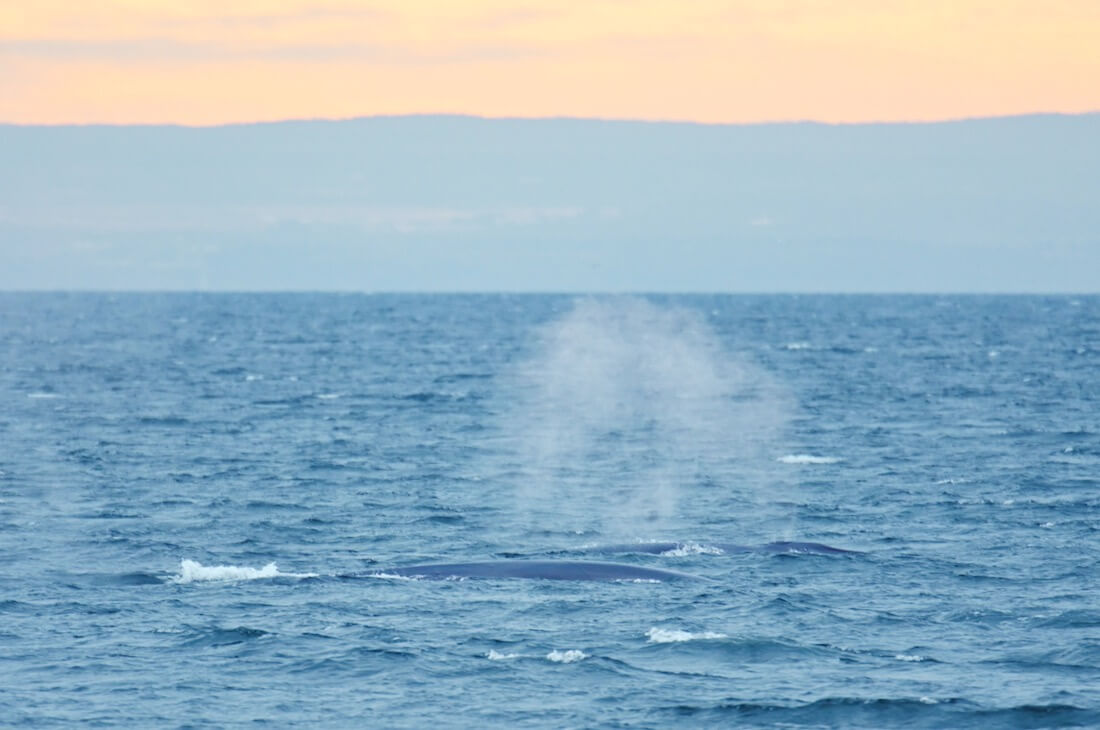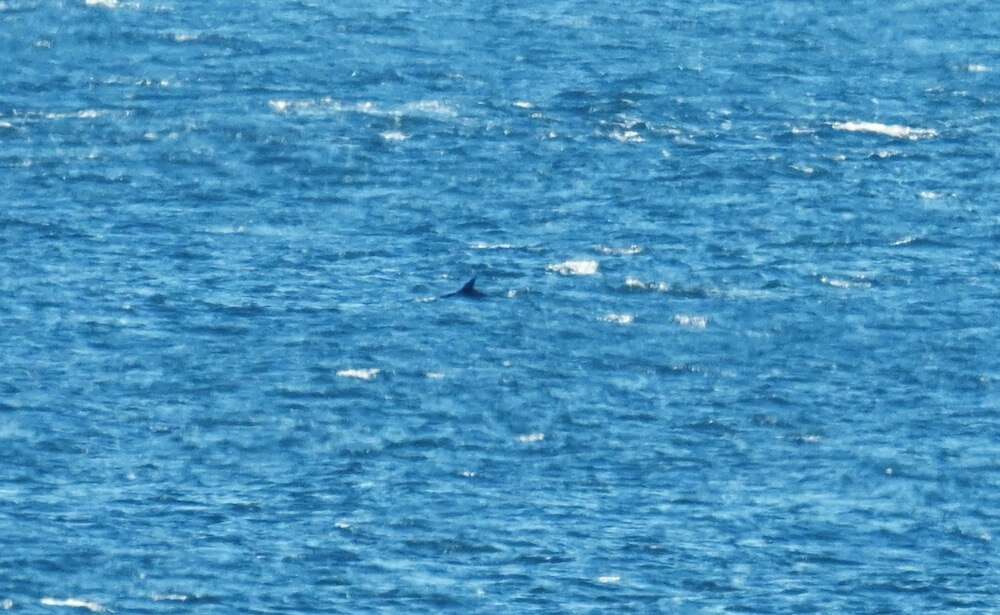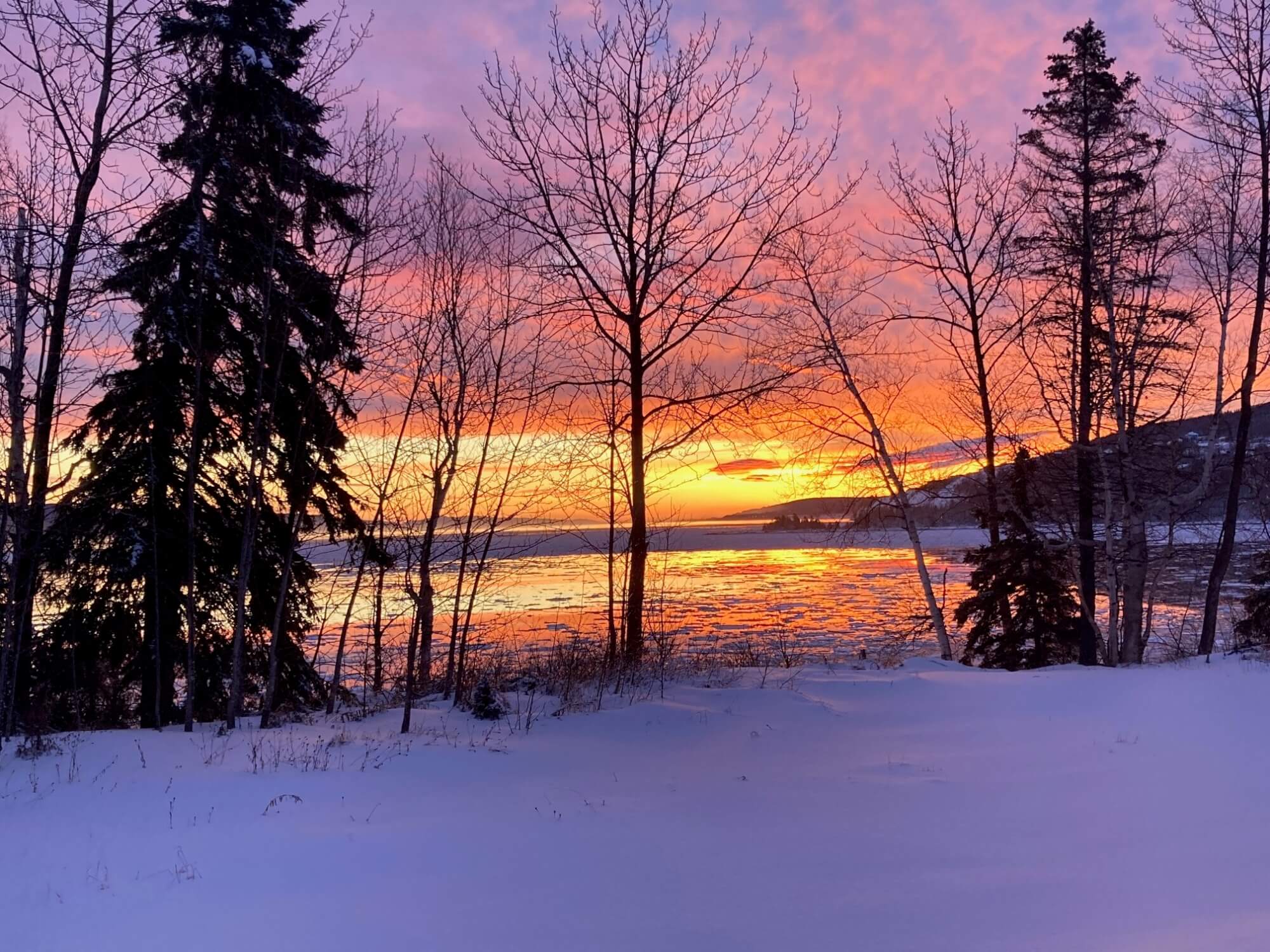The presence of fin whales in the estuary surprised observers just in time for New Year’s. Harp seals have been increasingly settling down on the shores while a few belugas have been observed here and there. Not to mention the shock waves caused by nearly a dozen white-sided dolphins!
Large rorquals of winter
It was on December 22 that the first big blast was spotted off the coast of Les Bergeronnes. Even if the species could not be identified, the height of the spout suggests that it was either a fin whale or a blue whale. Two days later, just in time for Christmas Eve, two fin whales were roaming offshore. A wildlife photographer even manages to identify the two individuals, both of which are well known in the sector: Zipper and Ti-Croche. The latter was even sporting a satellite tag placed by Fisheries and Oceans Canada last fall.
Fin whales typically migrate to the lower latitudes of the North Atlantic to spend the winter, though their migration patterns are poorly known. Let’s hope this study will help shed some light on these mysteries!
Another large blast – unidentified this time – was observed on December 31, while a local resident reported seeing more than five large cetaceans including a fin whale in front of his home in Les Bergeronnes! In Franquelin, the last day of the year was also rich in large whale sightings. Residents were able to admire two fin whales: “The New Year’s Eve whales, as we called them, came to wish us a happy 2024.” On January 4, two other large rorquals were seen passing through the area: a fin whale and another whose species could not be identified.
Seals on the south shore
The Marine Mammal Observation Network is taking this opportunity to encourage observers to use the data entry tool of the Navigating Whale Habitat online platform. “Citizen data are complementary to scientific data and can be very useful for understanding the distribution of marine mammals, especially in winter. Every observation counts!”
Even if it is possible to approach them, it is recalled that observers should maintain a distance of 100 metres from seals to avoid causing them stress. Keep your pets on a leash, both for their own safety and that of the seal(s). If the seal is in an awkward place for human activities or if you see other people disturbing or handling it, contact the Quebec Marine Mammal Emergency Response Network at 1-877-722-5346.
Belugas and dolphins
During her ferry crossing, one marine mammal enthusiast was able to admire a beluga. “Sitting in my car, I saw a man rush to the bow of the boat; I got out and he told me there was a beluga… I had just enough time to get a glimpse of its back before it dove and the ferry docked.” White-sided dolphins made a surprise appearance on December 31, in Les Bergeronnes!
Ultimately, there were plenty of great sightings to end the year with a bang! We hope for much of the same for 2024!
Thanks to all our collaborators!
Special thanks go out to all our observers who share their love for marine mammals with us! Your encounters with cetaceans and pinnipeds are always a pleasure to read and discover.
On the water or from shore, it is your eyes that give life to this column.
Laetitia Desbordes
Diane Ostiguy
Renaud Pintiaux
Pascal Pitre
Andréanne Sylvain
Marielle Vanasse
And all those we left out!
Additionally, we would like to acknowledge the following teams for also sharing their sightings:
Mingan Island Cetacean Study (MICS), Marine Mammal Observation Network (ROMM),
Quebec Marine Mammal Emergency Response Network: Status Report (QMMERN),
Group for Research and Education on Marine Mammals (GREMM)
Would you also like to share your observations?
Have you seen any marine mammals in the St. Lawrence? Whether it’s a spout offshore or just a couple of seals, drop us a line and send your photos to [email protected]!








